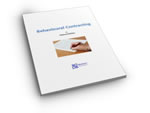 Note taking is an area that causes concern, confusion and worry for many coaches. When you are training, trainers often want you to write a lot more than is needed in real life as a way of being able to analyze your thinking and analytical processes. It is also true that many courses do not give any training on note-taking. However, when you are out on your own you have to find a way of capturing the information you need without writing reams and reams. I developed a note taking model back in the 1990’s which enables you to capture the relevant details without falling foul of the law should (albeit unlikely) your notes are called upon in a court of law.
Note taking is an area that causes concern, confusion and worry for many coaches. When you are training, trainers often want you to write a lot more than is needed in real life as a way of being able to analyze your thinking and analytical processes. It is also true that many courses do not give any training on note-taking. However, when you are out on your own you have to find a way of capturing the information you need without writing reams and reams. I developed a note taking model back in the 1990’s which enables you to capture the relevant details without falling foul of the law should (albeit unlikely) your notes are called upon in a court of law.
The ‘ACT’ Model
‘A’ stands for ‘Actual’ – that is all the factual information spoken about. For example, “we discussed the need for increasing personal branding within the organization and ways of influencing the perceptions of others”. This part captures the pure facts of what was discussed and therefore simply states what was talked about.
‘C’ stands for the ‘coaches comments’ – for example, ‘”the client asked about a model on branding so will research and send the relevant information” or, “when I attempted to explore the way my coaching client felt about contacting others s/he found this difficult to explain to me”. This section is where you capture your thoughts. However, it is always best to try and remain as factual as possible to avoid the concept of being accused of personal bias.
For example, “really struggling with this client because she is so difficult” is very different to “this client seems to find it hard to focus on one issue at a time and I have discussed with her”. If you have strong feelings about a client write these down on a separate piece of paper and take the issue to supervision then destroy/shred the paper you wrote this on when the issue is dealt with.
‘T’ stands for tasks agreed – both those you have promised to deal with, for example ‘I agreed that I would send an article on personal branding’ or the client’s such as ‘the client agreed to speak to his/her manager about devising a development plan’. This part of the model simply captures the actions.
Notes provide a quick way of reminding the coach of:
• What has been discussed
• Work undertaken and progress
• Assignments
• Other actions the coach needs to take for the client or themselves prior to the next session
Notes also help the coach to:
• Record the actions and reactions of clients
• Record the interaction between client and coach
• Track ideas and interventions used
• Track those issues to be taken to coaching supervision/co-coaching groups
• Consider and reflect upon the strategies being used or those for future consideration
In addition, notes can remind the coach of:
• The number of client sessions to-date
• Reviews dates
• Fees paid or balance outstanding
• Any materials (such as books) on loan to the client
There may be times when a coach either needs to contact an external source on behalf of the client. For example, providing feedback to an HR department with the client’s permission or, alternatively, the coach may be contacted and asked to provide information about a client to a third party. The rules of confidentiality must be respected and permission for disclosure sought from the client. Your client notes will form the basis of any response.
There may be occasions (very rare) when the coach may be called upon by the legal system to outline the work s/he has been undertaking with a client, for example at an employment tribunal. If a coach is required to give evidence in whatever setting it can be very stressful and could be made more so if the coach was unable to answers questions due to poor record-keeping. A skilled and aggressive lawyer could use the absence of such notes as an indicator of coach’s incompetence or failure to give appropriate service. In addition, all materials held such as questionnaires, letters, emails etc will also be requested. This is the reason why it is best to write anything under ‘C’ above that could be contentious separately and then destroy that information once dealt with.
Notes should always be stored safely and securely. In a lockable cabinet or on a password protected computer and the coach should be aware that if a client asks to see the notes kept on him/her as this is their right. Therefore, the more factual the notes the less easy it is to accuse the coach of personal bias. Do remember that keeping notes means you need to be registered with the Data Protection Registrar and abide by the Data Protection Act.
Professional bodies may have requirements for coaches in relation to note-taking. For example, The Association for Coaching’s Code of Ethics and Good Practice states that:
“Coaches are required to maintain appropriate records of their work with Clients, ensuring that any such records are accurate and that reasonable security precautions are taken to protect against third party disclosure. Attention should be given to the coachee’s rights under any current legislation, e.g. data protection act”
A Basic System for retaining notes
• Keeping all client notes/information for seven years after the completion of coaching. This includes letters, cards, postcards, email messages, questionnaires, notes of dates, times and content of telephone conversations and copies of any materials used or sent to me by the client. Although this is based on a model used by counsellors it does no harm to consider using it as it demonstrates a thoughtful approach.
• Destroying the client information by shredding at the end of seven years.
Note taking does not need to be onerous but the coach does need to think about a system that s/he can implement that is easy and yet comprehensive enough to deal with all eventualities.
Tips on note-taking
1. Stick to the facts
2. Have a consistent format
3. Remember notes can be in the form of bullet points as what matters is that you or anyone else (should you be run over by a bus) can make sense of what you have written.
Further reading: “101 Coaching Strategies & Techniques”






